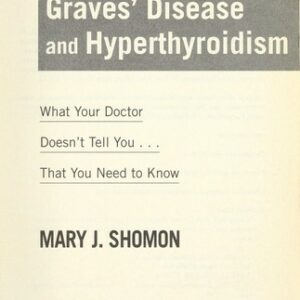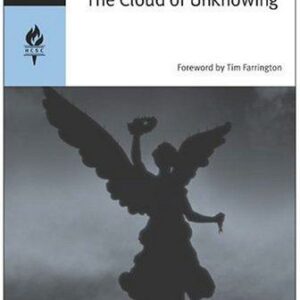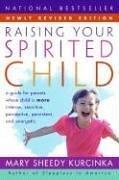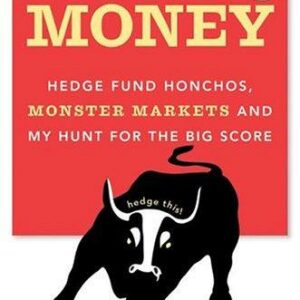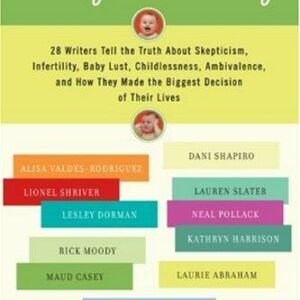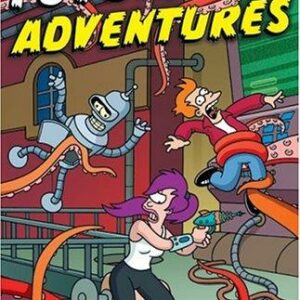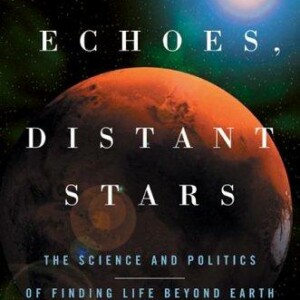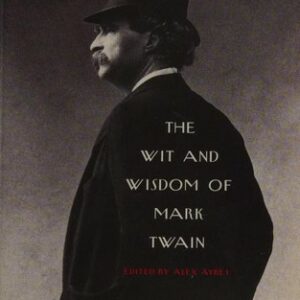ADHD 2.0
$20.00
| Title | Range | Discount |
|---|---|---|
| Trade Discount | 5 + | 25% |
- Description
- Additional information
Description
A revolutionary new approach to ADD/ADHD featuring cutting-edge research and strategies to help readers thrive, by the bestselling authors of the seminal books Driven to Distraction and Delivered from Distraction
“An inspired road map for living with a distractible brain . . . If you or your child suffer from ADHD, this book should be on your shelf. It will give you courage and hope.”—Michael Thompson, Ph.D., New York Times bestselling co-author of Raising Cain
World-renowned authors Dr. Edward M. Hallowell and Dr. John J. Ratey literally “wrote the book” on ADD/ADHD more than two decades ago. Their bestseller, Driven to Distraction, largely introduced this diagnosis to the public and sold more than a million copies along the way.
Now, most people have heard of ADHD and know someone who may have it. But lost in the discussion of both childhood and adult diagnosis of ADHD is the potential upside: Many hugely successful entrepreneurs and highly creative people attribute their achievements to ADHD. Also unknown to most are the recent research developments, including innovations that give a clearer understanding of the ADHD brain in action. In ADHD 2.0, Drs. Hallowell and Ratey, both of whom have this “variable attention trait,” draw on the latest science to provide both parents and adults with ADHD a plan for minimizing the downside and maximizing the benefits of ADHD at any age. They offer an arsenal of new strategies and lifestyle hacks for thriving with ADHD, including
• Find the right kind of difficult. Use these behavior assessments to discover the work, activity, or creative outlet best suited to an individual’s unique strengths.
• Reimagine environment. What specific elements to look for—at home, at school, or in the workplace—to enhance the creativity and entrepreneurial spirit inherent in the ADHD mind.
• Embrace innate neurological tendencies. Take advantage of new findings about the brain’s default mode network and cerebellum, which confer major benefits for people with ADHD.
• Tap into the healing power of connection. Tips for establishing and maintaining positive connection “the other Vitamind C” and the best antidote to the negativity that plagues so many people with ADHD.
• Consider medication. Gets the facts about the underlying chemistry, side effects, and proven benefits of all the pharmaceutical options.
As inspiring as it is practical, ADHD 2.0 will help you tap into the power of this mercurial condition and find the key that unlocks potential.“Hallowell writes with clarity and humanity. . . . [ADHD 2.0] is a message of hope . . . a remarkably clear, personable, digestible and useful book.”—Dr. Lloyd Sederer, Psychology Today
“Beautifully written, ADHD 2.0 is an inspired road map for living with a distractible brain. Two psychiatrists who have ADHD themselves combine the most recent brain science with humor, stories, and deep wisdom about how to manage your fluctuating attention. If you or your child suffer from ADHD, this book should be on your shelf. It will give you courage and hope.”—Michael Thompson, Ph.D., New York Times bestselling co-author of Raising Cain
“Infinitely validating, effortlessly funny, and staggeringly insightful . . . This book will save lives.”—Jessica McCabe, creator/host of How to ADHD
“I love the optimism and hope this timely book offers.. . . . Drs. Hallowell and Ratey draw upon the latest neuroscience as well as other key research fields to offer a comprehensive and helpful approach to living fully and happily with ADHD. . . . Highly recommended.”—Peter S. Jensen, M.D., founder, The REACH Institute
“As both a clinician and someone with ADHD, I found this book to be a reassuring masterpiece. Drs. Hallowell and Ratey combine evidence-based practice and research to help those with ADHD live a fulfilled and happy life. I will recommend it to my patients.”—Kristin Seymour, M.S.N., R.N., ADHD coach
“With knowledge and empathy, Drs. Hallowell and Ratey have written a book that draws on the latest scientific advances and their decades of clinical experience. Most important, ADHD 2.0 provides hope; it is a must-read for anyone who has or loves a person with this very common condition.”—Harold S. Koplewicz, M.D., president and medical director, Child Mind Institute, and author of The Scaffold Effect
“This information-packed guide is a must-have for anyone dealing with ADHD.”—Publishers WeeklyEdward Hallowell, M.D., is a board-certified child and adult psychiatrist, a world-renowned keynote speaker, and the New York Times bestselling author or co-author of more than twenty books, including Driven to Distraction (with John J. Ratey), which sparked a revolution in our understanding of ADHD. A graduate of Harvard College and Tulane Medical School, Dr. Hallowell was a Harvard Medical School faculty member for twenty-one years. A regular columnist for ADDitude magazine, he is also the host of the weekly podcast Distraction. He is the founder of The Hallowell Centers in Boston MetroWest, New York City, San Francisco, and Seattle. He lives in the Boston area with his wife and their three children.
John J. Ratey, M.D. is a clinical professor of psychiatry at Harvard Medical School. He is the author or co-author of numerous bestselling and groundbreaking books, including Spark, Driven to Distraction, and A User’s Guide to the Brain. He lives in Cambridge, Massachusetts.Chapter 1
A Spectrum of Traits
Who are we, the people who have ADHD?
We are the problem kid who drives his parents crazy by being totally disorganized, unable to follow through on anything, incapable of cleaning up a room, or washing dishes, or performing just about any assigned task; the one who is forever interrupting, making excuses for work not done, and generally functioning far below potential in most areas. We are the kid who gets daily lectures on how we’re squandering our talent, wasting the golden opportunity that our innate ability gives us to do well, and failing to make good use of all that our parents have provided.
We are also sometimes the talented executive who keeps falling short due to missed deadlines, forgotten obligations, social faux pas, and blown opportunities. Too often we are the addicts, the misfits, the unemployed, and the criminals who are just one diagnosis and treatment plan away from turning it all around. We are the people Marlon Brando spoke for in the classic 1954 film On the Waterfront when he said, “I coulda been a contender.” So many of us coulda been contenders, and shoulda been for sure.
But then, we can also make good. Can we ever! We are the seemingly tuned-out meeting participant who comes out of nowhere to provide the fresh idea that saves the day. Frequently, we are the “underachieving” child whose talent blooms with the right kind of help and finds incredible success after a checkered educational record. We are the contenders and the winners.
We are also imaginative and dynamic teachers, preachers, circus clowns, and stand-up comics, Navy SEALs or Army Rangers, inventors, tinkerers, and trend setters. Among us there are self-made millionaires and billionaires; Pulitzer and Nobel prize winners; Academy, Tony, Emmy, and Grammy award winners; topflight trial attorneys, brain surgeons, traders on the commodities exchange, and investment bankers. And we are often entrepreneurs. We are entrepreneurs ourselves, and the great majority of the adult patients we see for ADHD are or aspire to be entrepreneurs too. The owner and operator of an entrepreneurial support company called Strategic Coach, a man named Dan Sullivan (who also has ADHD!), estimates that at least 50 percent of his clients have ADHD as well.
Because people with ADHD don’t look any different from everyone else, our condition is invisible. But if you were to climb up into our heads, you’d discover quite a different landscape. You’d find ideas firing around like kernels in a popcorn machine: ideas coming rat-a-tat fast, and on no discernable schedule. Ideas coming in spontaneous, erratic bursts. And because we can’t turn this particular popcorn machine off, we are often unable to stop the idea generation at night; our minds never seem to rest.
Indeed, our minds are here and there and everywhere—all at once—which sometimes manifests as appearing to be somewhere else, in some dreamy state. And that means we often miss the proverbial (or literal!) boat. But then maybe we build an airplane or grab a pogo stick instead. We tune out in the middle of a job interview and don’t get the job, but perhaps we see a poster hanging in the human resources waiting room that sparks a new idea that leads us to a patented invention. We offend people by forgetting names and promises, but we make good by understanding what nobody else has picked up on. We shoot ourselves in the foot, only, on the spot, to devise a painless method to remove the bullet. The great mathematician Alan Turing summed us up when he said, “Sometimes it is the people no one can imagine anything of who do the things no one can imagine.” That sums us up perfectly.
Which is to say that ADHD is a far richer, more complicated, paradoxical, dangerous, but also potentially advantageous state of being than the oversimplified version most of the general public takes it to be or than even the detailed diagnostic criteria would have you believe. “ADHD” is a term that describes a way of being in the world. It is neither entirely a disorder nor entirely an asset. It is an array of traits specific to a unique kind of mind. It can become a distinct advantage or an abiding curse, depending on how a person manages it.
The Lunatic, the Lover, and the Poet
As different as ADHD can be from person to person, there are several qualities that seem nearly universal to people with it. Distractibility, impulsivity, and hyperactivity are the classic descriptors, but they find what we think are richer and more apt counterparts in Shakespeare’s musing about “the lunatic, the lover, and the poet.”
Having ADHD doesn’t mean you’re crazy, so admittedly “lunatic” may be too strong a word. But risk taking and irrational thinking go hand in hand with ADHD behavior. We like irrational. We’re at home in uncertainty. We’re at ease where others are anxious. We’re relaxed not knowing where we are or what direction we’re headed in. A common lament we hear from parents of teens with ADHD makes the point: “What was he thinking? He must have lost his mind!” Likewise the spouse who asks us, “Why does he keep doing the same stupid thing over and over again? Isn’t that the definition of insanity?”
Some people call this being a nonconformist, but that term misses the point. We don’t choose not to conform. We don’t even notice what the standard we’re not conforming to is!
People with ADHD are lovers in the sense that they tend to have unbridled optimism. We never met a deal we didn’t like, an opportunity we didn’t want to pursue, a chance we didn’t want to take. We get carried away. We see limitless possibilities where others see just the limits. The lover has trouble holding back, and not holding back is a major part of what it means to have ADHD.
Being a poet might best be defined with another trio of descriptors: creative, dreamy, and sometimes brooding.
“Creativity,” as we use the term in connection with ADHD, designates an innate ability, desire, and irrepressible urge to plunge one’s imagination regularly and deeply into life—into a project, an idea, a piece of music, a sandcastle. Indeed, people with ADHD feel an abiding need—an omnipresent itch—to create something. It’s with us all the time, this unnamed appetite, whether we understand what it is or not; the act of creation offers the magnet’s north pole to our south and clicks us together. It captivates us, plants us in the present, and sets us transfixed within the creative act, whatever it might happen to be.
Even awake we’re dreaming, always creating, always searching for some mud pie to turn into pumpkin apple chiffon. Our imagination fuels our curiosity to find out what that noise was, or what was under the rock, or why the petri dish looks different from when we left it. If we weren’t so dreamy and curious we could stay on track and never get distracted. But we do investigate the noise, the soil, the petri dish. This is why the word “deficit” in the name of our condition is such a misnomer. In fact, we do not suffer from a deficit of attention. Just the opposite. We’ve got an overabundance of attention, more attention than we can cope with; our constant challenge is to control it.
As for brooding, this is the special blessing and the bitter curse of ADHD. You have a vision. Maybe you’ve come up with a novel technology for making an unbeatable knife sharpener. Or maybe you think you have the plot to the perfect novel. Whatever your vision, you go at it like you never have before.
But then, what you’ve created . . . disappoints. It’s not just disappointing, but suddenly you feel it’s terrible, awful, the worst ever, and you plunge into despair. Then, just as unexpectedly, out of nowhere the vision comes back. You get reinspired. You can see it, you want it, you can’t resist. You have to try again. Off you go—dreaming and creating and probably brooding again too.
Like all three characters—the lunatic, the lover, and the poet—we have a pronounced intolerance of boredom; boredom is our kryptonite. The second that we experience boredom—which you might think of as a lack of stimulation—we reflexively, instantaneously, automatically and without conscious thought seek stimulation. We don’t care what it is, we just have to address the mental emergency—the brain pain—that boredom sets off. Like mental EMTs, we swing into action. We might pick a fight to create a bit of stimulation; we might go shopping online with manic abandon; we might rob a bank; we might snort cocaine—or we might invent the best widget the world has ever seen or come up with the solution to what’s keeping our business from taking off.US
Additional information
| Weight | 6 oz |
|---|---|
| Dimensions | 0.5300 × 5.2000 × 8.0000 in |
| Imprint | |
| Format | |
| ISBN-13 | |
| Author | |
| Audience | |
| BISAC | |
| Subjects | adhd books for parents, psychology books, mental health books, neuropsychology, ADHD, attention deficit disorder, add, personality traits, relationship books, medical books, neuroscience, psychology book, cognitive neuroscience, special education, adhd books, personality types, adhd book, PSY022010, john ratey, adhd 2.0, focus, mental health, psychology, self help, adult adhd, relationships, education, family, PSY023000, medical, parenting, technology, creativity, behavior, parenting books, social skills, self help books, personality, Brain |


